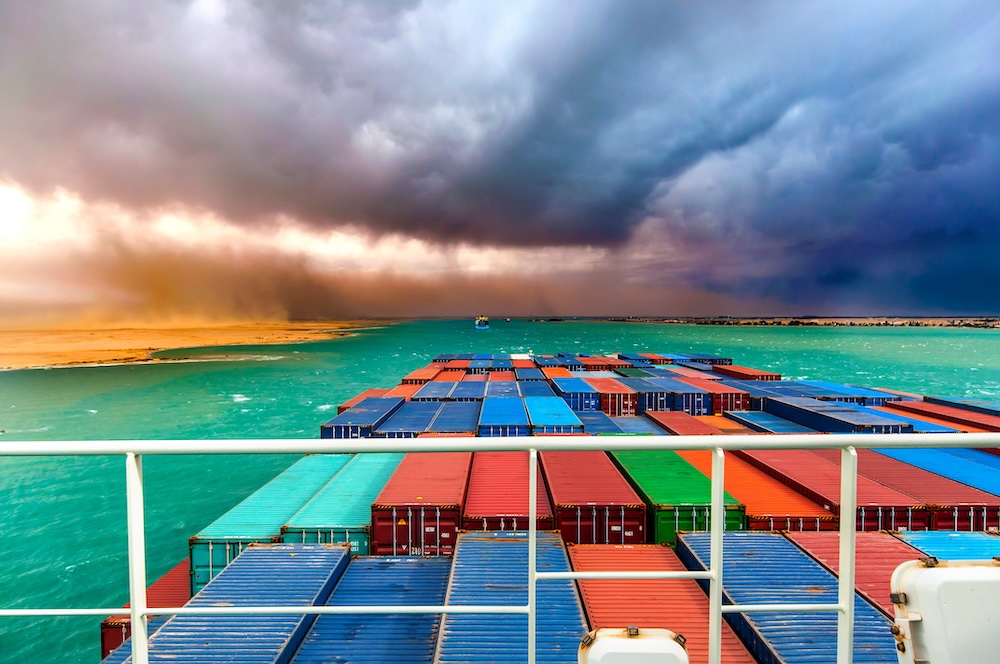 David Jinks Head of Consumer Research, ParcelHero
David Jinks Head of Consumer Research, ParcelHero

Already, we have a drought in Panama severely reducing both the number of ships and the amount they can carry using the Panama Canal. Now the most direct route between Asia and Europe, via the Suez Canal, is being severely disrupted. Losing unrestricted access to these two vital trade routes will mean spiralling costs and lengthy delays.
The Yemeni Houthi militant group’s attacks on ships in the Red Sea are serious because the Red Sea leads directly to the Suez Canal. This is a vital 119-mile shortcut between Asia and Europe that saves ships traveling an extra 5,500 miles around the Cape of Good Hope, adding at least a week to most sailings.
A third of all the world’s container ships use the Suez Canal/Red Sea route. Each of those containers will likely be carrying thousands of products made in Asia for the UK and mainland Europe. Products typically include everything from Barbie dolls to iPhones to fast fashion. The world’s big three shipping lines, MSC, Maersk and CMA CGM, announced they were pausing Suez Canal transits at the onset of the attacks, with many ships re-routing via the Cape of Good Hope rather than risk being fired upon.
Consequently, Asian-manufactured goods heading for the UK have been delayed and costs have increased significantly. With global trade in the doldrums, many multinational companies had become used to very cheap services, as the big shipping operators fought over the available custom. However, shipping lines prices are now rising steeply and unexpectedly, and this is having an impact on manufacturers and retailers. From Next to Ikea, many well-known retailers have already sounded the alarm as the attacks continue and disruption increases.
Not only are there delays and increased fuel costs but also increased insurance coverage fees, as the Cape route is considered less safe due to potential pirate attacks and poor weather around Africa.
Meanwhile, the world’s other great shortcut, the Panama Canal, still faces its own crisis. The amount of goods carried by vessels using the canal has been massively reduced and there are now severe cuts to the daily number of ships permitted to use the vital trade link.
Generally, around 36 ships are allowed to transit the canal a day. However, from 1 January 2024, a limit of just 20 sailings has been in force. The result is that some desperate operators who haven’t booked their transit of the canal months in advance are paying up to $4m at auction. The normal price for a container or bulk carrier ship is between $60,000 to $300,000 for a Neo Panamax ship over 10,000TEU.
The huge French carrier CMA CGM (the third-largest shipping line in the world) has already announced a planned $150 per TEU container surcharge. A typical Panamax container ship can carry 5,000 TEU containers, so that means increased costs of up to $750,000 per sailing. The enormous Neo Panamax vessels are able to carry up to 13,000 TEU containers and customers are looking at a very significant increase in costs.
With global trade routes in turmoil, who is likely to foot this bill? While manufacturers and retailers will be the ones paying more for every container carried in the short term, in the long term it will be consumers who end up paying. Expect store prices on products from toys to electronics to furniture to rise in the coming months.
The final result of this ‘perfect storm’ hitting the normally calm waters of the Panama and Suez canals is hard to gauge. It will certainly motivate businesses that are interested in reshoring, which means returning manufacturing to Britain from areas such as China, where labour costs have been cheaper. The advantages of manufacturing abroad could become outweighed by increased transport costs and global supply chain disruptions.
One slight piece of good news is that the problems are unlikely to significantly impact courier express parcel deliveries to and from the US West Coast. These are usually air freighted, bypassing the Panama problem. Mostly, it will be larger, heavier goods, which cannot be airfreighted, that will be hit by new fees. However, be aware of a potential impact of the restrictions on budget, low-urgency 'surface mail', the term used by freight companies to describe mail transported by land and sea. Similarly, this applies to services between the UK and Asia. We do advise everyone sending items to the US to regularly check ParcelHero’s USA page, which gives full details on any changes in prices, Customs advice, and details about sending food etc.
The US is ParcelHero’s biggest individual overseas market. For expert advice on UK-US shipping, including useful frequently asked questions (FAQs), help for exporters and prohibited items details, see: https://www.parcelhero.com/en-gb/international-courier-services/usa-parcel-delivery